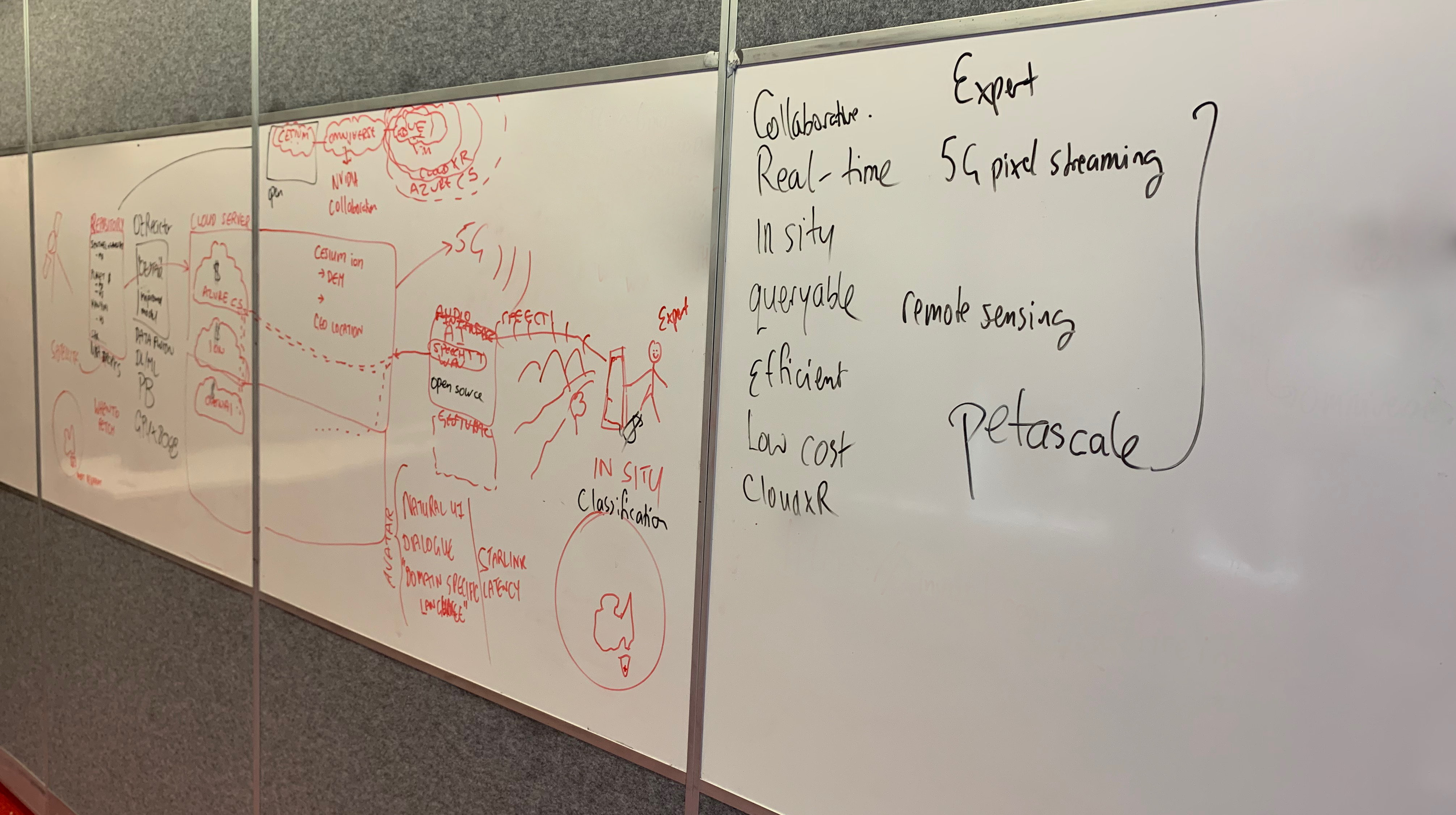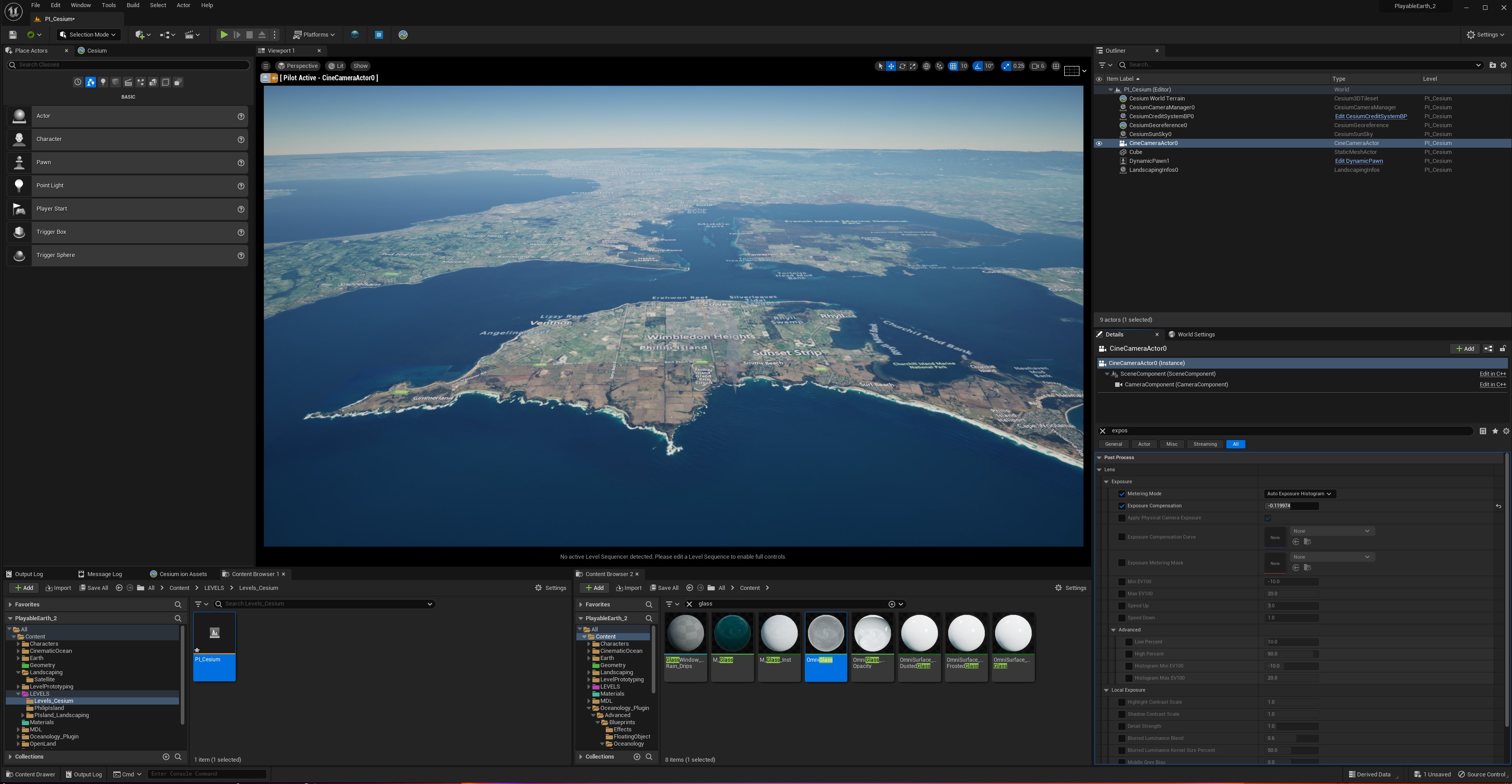Hi and welcome to our creative research journal for Playable Earth: Disrupting the status quo of Earth Observation Visualisation through immersion and interaction.
I’m going keep this pretty informal – basically a blog with posts about our research progress, with links and references to relevant materials.
Chris and I have been meeting regularly since the beginning of the project in late November 2022, and will continue posting throughout the duration of the project until late June 2023. We’ve agreed to run the project on a 0.5 basis, allowing us to extend the residency from the usual 3-months duration full-time, to ~6-months half-time. This fits in well with our various commitments to other projects and facilitates some cross-hybridisation.
Broadly speaking, the objective of our research is to explore novel ways of using a computer game engine – specifically Unreal Engine – in the deployment and visualisation of Earth Observation data. Our interest is in exploring various aspects of ‘immersive’ visualisation through XR (eXtended Reality). XR is a catch-all abbreviation for an array of technologies including augmented reality (AR) and virtual reality (VR).
An important caveat here is that we need to exemplify the utility of ‘immersive’ media. It’s a vague term that does not explicitly identify the utility of the form – if there is one, beyond obvious entertainment applications. My intuition is that there is, and that it is not terribly complicated – but we need to articulate knowledge about prospective users, human visual perception, semiotics and human-computer interaction as well. More about this in a later post.
Modern computer game engines provide a robust platform for this kind of research, subtended by the huge financial resources of the games industry and its investment in the technological infrastructure of software and compute resources – that are developing at such a startling rate. Interaction with advanced machine learning systems – AI – is obvious and imperative. It makes sense to use them for sciartistic visualisation, as they provide many useful features consolidated within a systematic approach to programming, content development and human-computer interaction (HCI).
Some difficulties arise in interfacing data formats and approaches commonly used by creative industries technologies (CIT), with more specialised forms used by scientific visualisation and visual analytics.
Furthermore, game engines can enable the development of novel aesthetic approaches towards visualisation, that often fall outside the remit of strictly ‘scientific’ visualisation conventions. Thus a prospectively fertile intersection of art and science emerges – they can become much more conversant modalities for eliciting knowledge and insight about the world.
As an artist who has worked extensively with Unreal Engine on a number of personal projects, as well as someone with a PhD in computational geophysics, focusing upon scientific data visualisation, the opportunity to work with Chris and the Smartsat CRC at Swinburne is opportune and exciting – truly a way to draw together these strands of art and science in some blue-sky research.
We also express our gratitude to the Australian Network for Art and Technology (ANAT), CEO Melissa Delaney and her staff for facilitating this novel approach to supporting this research – we hope it paves the way for future initiatives of this type.





